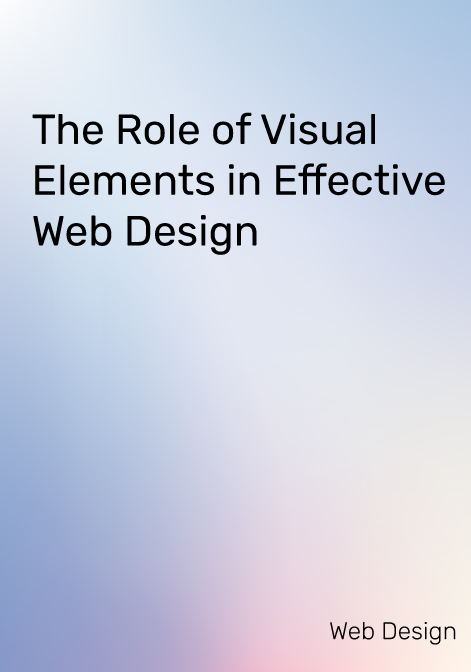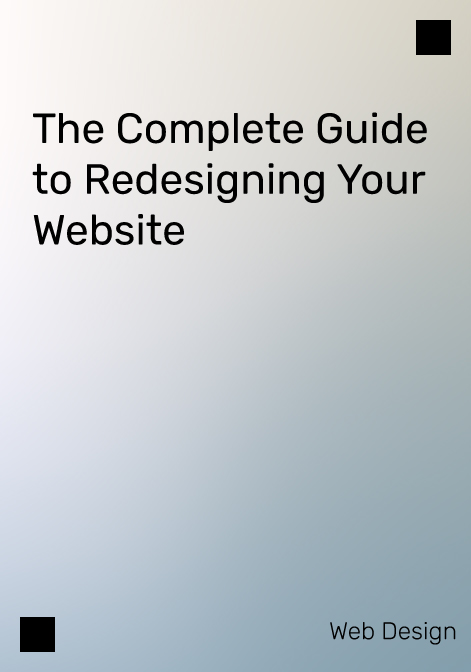Among the various components that contribute to successful web design, visual elements stand out as powerful tools for engagement, communication, and brand identity.
We’ll discuss how visual elements impact user experience, search engine optimization (SEO), and the overall effectiveness of a website in this comprehensive article.
1. The Power of Visual Elements
Effective web design extends beyond mere aesthetics; it encompasses functionality, usability, and emotional resonance.
Visual elements—such as color, typography, imagery, and layout—play a pivotal role in achieving these goals. Let’s explore how these elements influence user perception and interaction.
Understanding Gestalt Principles
Before we dive into specific visual elements, let’s briefly discuss Gestalt principles. These psychological theories explain how humans perceive and organize visual information.
Designers can leverage these principles to create cohesive and harmonious layouts:
-
Emergence: Users recognize the whole design before analyzing individual parts. This principle emphasizes overall coherence. For instance, consider how a well-organized homepage immediately conveys the website’s purpose and brand identity.
-
Reification: Our brains fill in gaps to identify objects. Designers can use this concept to create meaningful visual patterns. For example, a series of icons or images can represent a process or sequence, even if some details are omitted.
-
Visual Hierarchy: Arranging elements based on importance guides users’ attention. Contrast, size, and placement contribute to an effective hierarchy. A clear visual hierarchy ensures users focus on essential content first, whether a call-to-action button or a headline.
2. Visual Communication in Web Design
Visuals serve as a universal language, transcending cultural and linguistic barriers. Here’s why they matter:
-
First Impressions: Visitors form an opinion about a website within milliseconds. A visually appealing homepage sets the tone for the entire experience. Consider how Apple’s minimalist design communicates sophistication and simplicity.
-
Storytelling: Images and videos convey narratives more effectively than text alone. They evoke emotions, create memorable experiences, and allow brands to tell their stories. Airbnb, for instance, uses high-quality photos of accommodations to inspire trust and desire.
-
Branding: Consistent visual elements reinforce brand identity. Think of Coca-Cola’s iconic red or Google’s playful logo. When users encounter familiar colors, fonts, and imagery, they associate them with a specific brand.
Additional Reads: Web Design Checklist
3. Key Visual Elements in Web Design
Let’s explore the essential visual components and their impact:
Color
-
Role: Color influences mood, perception, and brand recognition. It’s essential to choose a color palette that aligns with your brand and resonates with your target audience.
-
Best practices:
-
Use a consistent color scheme throughout your website.
-
Consider cultural associations (e.g., red for urgency, green for nature).
-
Ensure readability by contrasting text and background colors appropriately.
-
Typography
-
Role: Fonts affect readability, hierarchy, and aesthetics. Typography choices convey personality and tone.
-
Best practices:
-
Choose legible fonts (sans-serif for body text, serif for headings).
-
Maintain font consistency across all pages.
-
Adjust font size for different devices (responsive design).
-
Imagery and icons
-
Role: Images evoke emotions, convey messages, and enhance storytelling. Icons, on the other hand, simplify complex concepts and improve navigation.
-
Best practices:
-
Opt for high-quality, relevant images that resonate with your brand.
-
Use icons strategically (e.g., a magnifying glass for search, a shopping cart for checkout).
-
Compress images for faster loading times without compromising quality.
-
Layout and Composition
-
Role: How you arrange elements affects usability and visual flow. A well-organized layout guides users through content.
-
Best Practices:
-
Follow the rule of thirds (divide the screen into a 3×3 grid) to create balanced compositions.
-
Balance whitespace (negative space) and content.
-
Prioritize important elements (e.g., call-to-action buttons, product images).
-
Whitespace (Negative Space)
-
Role: Whitespace provides breathing room and prevents visual clutter. It enhances readability and focus.
-
Best Practices:
-
Use ample whitespace around text and images.
-
Avoid cramming too much content into a small space.
-
Remember that less can be more—sometimes simplicity speaks louder.
-
4. Optimizing Visual Elements for SEO
Visuals impact SEO more than you might think. Here’s how to optimize them:
-
Alt Text: Describe images using relevant keywords. Screen readers rely on alt text, and search engines consider it.
-
Image Compression: Balance image quality and loading speed. Compressed images improve page load times.
-
Responsive Design: Ensure visuals adapt seamlessly to various devices (desktop, tablet, mobile).
-
Schema Markup: Use structured data to enhance search engine understanding of visual content.
Additional Reads: Typography Trends
5. Case Studies and Best Practices
Let’s explore real-world examples of effective visual design. These case studies demonstrate how successful websites strategically use visual elements to enhance user experience and achieve their goals:
-
Apple: Minimalism at Its Finest
-
Objective: Apple’s website aims to showcase its products and create desire among users.
-
Visual Elements:
-
High-resolution product images with clean backgrounds.
-
Consistent use of white space.
-
Minimalistic typography.
-
-
Impact:
-
Users immediately focus on the product details.
-
The lack of distractions reinforces Apple’s brand identity.
-
-
Takeaway: Prioritize clarity and simplicity in your design.
-
-
Airbnb: Inviting Exploration
-
Objective: Airbnb’s website encourages users to explore accommodations worldwide.
-
Visual Elements:
-
Large, captivating images of unique properties.
-
Clear calls-to-action (e.g., “Explore” or “Book now”).
-
Consistent color palette.
-
-
Impact:
-
Emotional connection: Users imagine themselves in these spaces.
-
Trust and desire are built through compelling visuals.
-
-
Takeaway: Use high-quality, relevant images to tell a story.
-
Conclusion
Visual elements are more than mere embellishments; they are integral to successful web design. By implementing best practices and understanding their impacts, designers can create engaging, user-friendly, and SEO-friendly websites.




